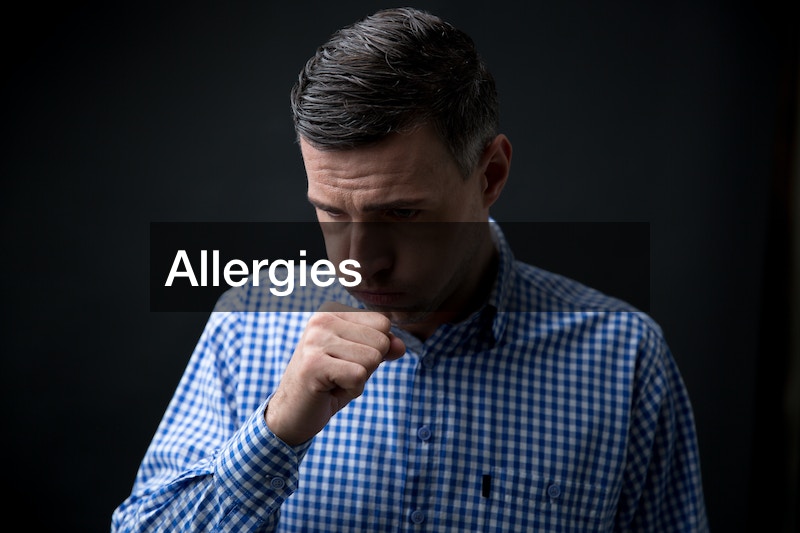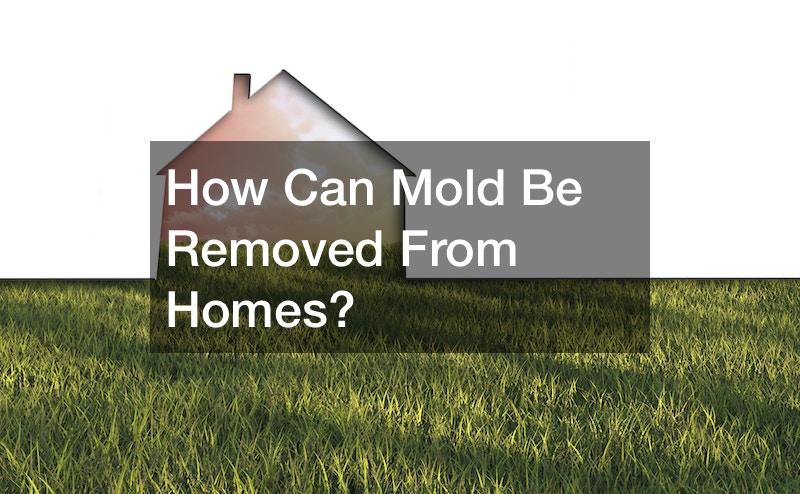
Whether it shows in the form of slimy black spots, fuzzy white patches, or a slippery orange film, mold in your home is more than just an eyesore. It can transform priceless items into dingy antiquities that belong in the trash. Household mold can potentially make you and your household members sick. People with asthma or allergies are especially susceptible. However, even if you’re not allergic to mold, exposure can irritate your skin, eyes, lungs, throat, and nose. This piece aims to help you understand the dangers of mold in your home.
1. Air Travelers

Mold flourishes anywhere with porous material and an optimal level of moisture. Such conditions may be encouraged by factors such as leaking pipes, a leaky roof, damp crawl spaces, basements, or flooding. Something as simple as leaving a damp towel on your floor is enough to encourage mold growth. Once mold finds a location with the ideal conditions, it can quickly move through the air and reach other vulnerable spots. When this happens, the detrimental impacts on health start to manifest. Some symptoms to watch out for include allergies suddenly becoming worse, sudden rashes, sneezing and itching, irritability and fatigue, and trouble sleeping or breathing.
Even though mold prefers to stay in undisturbed spots, it’ll spread its spores if there is even the slightest disturbance. These may include vibrations in the floors and walls caused by individuals moving about on the floor above. When mold spores are spread throughout the air, they can make their way into ventilation systems like the air conditioning unit and air ducts. Once inhaled, symptoms such as sneezing, wheezing, and coughing will start to manifest. Air travelers present one of the biggest dangers of mold in your home.
2. Building Materials Damage
One of the dangers of mold in your home is building material damage. Once the mold source has established itself in a certain location, it can start to eat away at its host. This activity can severely damage your property’s structural integrity. Common telltale signs include discolored ceilings and walls, damaged hardwood floors, or condensation on windows and walls. Mold can also produce a powerful musty odor. Those who are sensitive to strong odors will immediately notice this. It is your responsibility as the property owner to locate any mold and contact mold remediation services because mold will not go away on its own.
3. Breathing Challenges

One of the dangers of mold in your home is difficulty breathing. Fragments, cells, spores, and other unstable organic molecules can make their way into the air as mold grows. They’re capable of producing mycotoxins, irritants, and allergens. Some of these are toxic, particularly to people who are sensitive to them. Moisture also encourages the deterioration of a material, which raises the air’s particle or dust content. These particles can cause throat, nose, and lung irritation, particularly in people who already have breathing issues, asthma, or a chronic lung illness.
4. Allergies

The dangers of mold in your home also include allergies. The presence of mold can cause varying reactions in allergic or sensitive persons. Mold allergies can exhibit symptoms similar to those of other allergens, such as seasonal allergies or hay fever. Airborne contaminants can also affect your upper respiratory tract. The symptoms include:
- A runny or blocked nose
- An itchy throat
- An itchy nose
- Watery eyes
- Sneezing
People who have asthma with a mold allergy are more likely to experience an asthma attack when mold is present in the air. A high volume of dust also increases the risk of dust mites, which trigger allergic reactions in certain people.
5. Aspergillosis
The dangers of mold in your home also include aspergillosis. A specific type of mold known as Aspergillus can cause aspergillosis, a dangerous medical condition. Most people can inhale the spores of this fungus without falling ill, but those with compromised immune systems or pre-existing lung conditions may experience a severe reaction. Aspergillosis comes in several forms:
- Allergic Aspergillus sinusitis: This type can cause a headache and affects the nose.
- Allergic bronchopulmonary aspergillosis (ABPA): This type comprises the lungs and causes breathing problems.
- Chronic pulmonary aspergillosis: This type typically exhibits symptoms such as weight loss, a cough, or breathing problems.
- Aspergilloma, or fungus ball: This type can lead to respiratory issues as well as a cough that may produce blood.
6. How Prevalent is Mold in Structures?
Mold is fairly common in homes and other structures. Mold develops in areas with high moisture levels. This may be around pipes, windows, roof leaks, or recently flooded areas. Common areas where mold thrives include wood products, ceiling tiles, cardboard, and paper products. Mold also tends to develop in upholstery, fabric, carpets, drywall, insulation, wallpaper, paints, and dust areas. Cladosporium, Penicillium, and Aspergillus are the most prevalent indoor mold species.
7. What Are the Signs and Symptoms of Mold Exposure?
The most typical effects of mold exposure are allergies and irritation. Infections and illness are less common side effects of mold exposure. Serious mold infections are comparatively uncommon and mostly affect those with severely weakened immune systems. Mold exposure at work has been linked to illness. Although symptoms might vary, here are the most common ones reported by those who are exposed to indoor mold: headache, skin irritation, throat irritation, coughing, wheezing and difficulty breathing, eye irritation, and nasal and sinus congestion.
8. How to Prevent Indoor Mold
Mold spores are literally present everywhere; regulating moisture levels is essential to halting their development. Leaks from basements, walls, and roofs, condensation in bathrooms and on windows, wet carpets, standing water on floors, and drains, and dehumidifying, cooling, and heating equipment are common sources within homes and businesses. To prevent the development of mold, leaks must be stopped, standing water must be eliminated, condensation-prone areas (particularly bathrooms and kitchens) must be ventilated, grout cleaning should be done and wet carpets and furniture must be dried or removed right away. In humid conditions, air conditioners and dehumidifiers can be used, along with indoor mold-resistance paints.
If you suspect the presence of mold, mold inspections are the best course of action. There are no uniform national standards for mold inspectors, testing procedures, normal mold concentrations, or reporting formats. This makes the interpretation of test results and any potential ramifications challenging. A technology developed by the EPA can identify the DNA of the different types of molds in indoor areas, even if the mold is concealed. This testing approach is now being employed experimentally.
Mold should be eliminated as soon as possible if confirmed by a visual inspection by a reputable inspector. If not addressed, it can damage the materials it grows on and cause several health issues. Commercial mold and mildew removers or a bleach and water solution (one cup of bleach to one-gallon water) can be used to get rid of small quantities of mold on hard surfaces. Carefully follow the product’s instructions to avoid inhaling fumes, skin irritation, or getting chemicals in your eyes. For prevention, you may need to work with a professional plumber, a drain cleaning service, or a building maintenance service.
Large amounts of mold necessitate the use of specialized eradication methods and personal safety equipment. The necessary steps are outlined by the US Environmental Protection Agency in a document titled ‘Mold Remediation in Schools and Commercial Buildings.’ However, this also applies to removing mold from homes.
9. How Does Mold Spread in an Indoor Setting and How Does It Develop?
Mold can develop both indoors and outdoors. It can infiltrate your home through open doors, vents, windows, and heating and cooling systems. Outdoors, mold can adhere to shoes, clothing, and pets through which it will find its way indoors. When mold spores make their way to areas with excessive moisture, such as areas where pipes, walls, plant pots, and roofs have sprung a leak or where flooding has occurred, they tend to grow and spread rapidly.
Most construction materials have nutrients that encourage mold growth. Wet cellulose materials such as paper, wood products, ceiling tiles, and cardboard particularly encourage the growth of mold. Other materials like upholstery, fabric, carpet, drywall, insulation materials, wallpaper, and paints also encourage mold growth.
10. Who is Most Susceptible to Health Issues Brought on by Mold Exposure?
People with allergies are more vulnerable to the dangers of mold in a home. Fungal infections are more likely to affect those with weakened immune systems or lung conditions. People with chronic respiratory illnesses, such as asthma or chronic obstructive pulmonary disease, are more likely to experience trouble breathing. Immune-suppressed people are more likely to get a mold infection. For diagnosis and treatment, consult a qualified medical professional if you or a member of your family has any of these conditions.
11. How Can Mold Be Removed From Homes?

The presence of mold in homes and other structures is a sign of a moisture or water issue. This should be the first issue to address. Start by clearing your living spaces of any moldy items. Once mold starts to develop in wallboards, drywall, ceiling tiles, insulation, and your carpet, the only solution is removal or replacement. Ensure you thoroughly clean and dry the affected area because mold contamination may recur if the source of moisture is still present, and you may still be sensitive to dead mold. If you can’t promptly dry your carpets and upholstery, remove or replace them.
After flooding, thoroughly clean and dry out your home as soon as possible (within 24 to 48 hours). Dig out the dirt and mud. To get rid of any leftover dirt, use a wet vacuum. Use soapy water and a bristle brush to scrub all cleanable surfaces, which include tile, wood, and stone. Use water and dish detergent to scrub hard surfaces (such as wood and metal furniture, molding, floor, worktops, and sinks) thoroughly. After cleaning, quickly and thoroughly, dry the surfaces. Use any fans, air conditioners, or dehumidifiers that weren’t impacted by floods to dry the surfaces. You can use soap and water, commercial products, or a bleach solution containing no more than one cup (eight ounces) of bleach per gallon of water to get rid of mold on hard surfaces. If you decide to remove the mold using bleach:
- Never combine ammonia with bleach or other household cleaners. Combining bleach with ammonia or other cleaning agents will result in hazardous, toxic fumes.
- Open doors and windows to let in some fresh air.
- Put on non-porous gloves and safety glasses.
- Follow the manufacturer’s instructions.
If you have a lot of mold in your home and don’t believe you can handle the cleanup alone, consider getting in touch with a mold damage restoration specialist. In some situations, the presence of mold may require the occupants of your home to vacate. However, this decision must be made individually. If you think you’re unwell after being exposed to mold in a structure, consult your doctor to identify the best course of action.
12. Why Does Mold Keep Resurfacing Despite Being Removed?
The main reason for mold regrowth after removal is failing to address all factors that supported their growth in the first place. Keep an eye on the moisture levels in your home and use fans to keep the space well-ventilated. Replace drafty, outdated windows and get your leaking pipes professionally sealed or clogged drain repair performed. If the mold keeps coming back and you can’t locate the source of the issue, turn to specialists for assistance. For commercial buildings, hiring a janitor service and equipping them with the right office cleaning supplies will prevent mold from recurring.
Understanding the dangers of mold in your home is the first step toward addressing mold issues. As soon as you spot signs of mold growth, make sure you look everywhere for other spots of mold infestation. You should also have expert mold removal services come over and take a look. The professionals are trained to conduct mold inspections, remediation, and implement prevention measures so they don’t recur in the future. Their years of expertise and ongoing training guarantee that their services are current and efficient.
